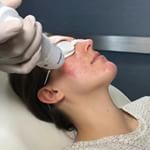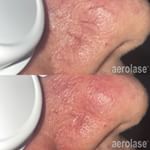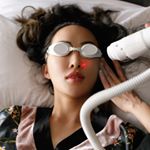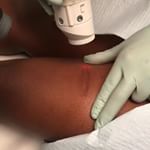The Journal of the European Academy of Dermatology and Venereology determined after the evaluation of 33 studies associated with significant reductions in acne lesions, that there is circumstantial evidence that a non-prescription treatment, including laser and light-based treatments... The authors note that while conventional therapy is still considered a first-line treatment, it is not always desirable due to development of antibiotic resistance and potential adverse effects associated with topical and systemic therapies.

Photo: FACEING ACNE
The majority of studies on laser and light-based treatments found a significant reduction in acne lesions and had a high rate of significant results for non-prescription therapies, however, the low methodological quality of the studies made it “difficult to draw clear conclusions.”
The circumstantial evidence for non-prescription therapies for the treatment of acne vulgaris has created a good foundation to base future research on. The authors note a great interest in this area and an urgent demand for effective, non-prescription treatment options in “addition to the use of conventional therapies.
The interest noted by the authors is part of a collective of dermatologists and patients searching for safer, more effective, and more tolerable treatment options for acne. The Global Alliance to Improve Outcomes in Acne has suggested that acne be considered a chronic disease rather than just a simple, adolescent condition based on the assertions of acne having the characteristics of a chronic disease including an extended course, recurrence, slow onset and/or acute outbreaks, and negative effects on the quality of life. This suggestion exemplifies the need for more research to be completed and better treatment options to be employed.
Previously, devices have not been able to safely, effectively, or tolerably reduce the pathogenesis of acne, or, were only able to address a single pathogenesis. Some are only able to reduce mild inflammation, others have been successful at photopneumatically removing comedos , and one was successful in reducing sebum. The singular pathogen mechanism of action proved minor success at reducing acne, but a comprehensive approach to addressing all pathogenesis is needed to effectively clear acne. This is an assumption of why a lack of new data for treating acne with laser or light-based devices has not been conducted.

Photo: HEALTHPLEX
A study has recently launched to evaluate the safety, efficacy, and tolerability of a 650-microsecond device for the treatment of acne vulgaris. It builds off both the need for devices to address all the pathogenesis of acne and of the case built by the 33 studies cited by the authors in The Journal of the European Academy of Dermatology and Venereology for studies to have better quality methodology. The study design, inclusion criteria, blinding, and assessment are in line with the authors’ demand for better quality methodological data.
 Aerolase LightPod Neo 650-microsecond Nd:YAG 1064nm laser.
Aerolase LightPod Neo 650-microsecond Nd:YAG 1064nm laser.The initial research of using a 650-microsecond device for the clearance of acne shows high success with a multifactorial approach by a single device to reduce sebum production, destroy p. acnes bacteria colonization, suppressing inflammation and removing hyperkeratinization by singing the hair follicle. If the research concludes that a 650-microsecond device is able to reduce sebum production and inflammation, this will be the first non-pharmacological method of reducing each of these pathogenesis since the introduction of isotretinoin and would present a drug-free, side-effect free solution to acne for dermatology. Research should be concluded late 2018.
Recently, a review article has been published in the Journal of Cosmetic Dermatology titled Current Treatments of Acne: Medications, Lights, Lasers and a Novel 650-Microsecond 1064-nm Nd:YAG Laser in May 2017, recognizing light-based and laser therapy as the future of acne therapy. Receive this article in your email inbox and download a PDF version to dive deeper into this treatment option.








